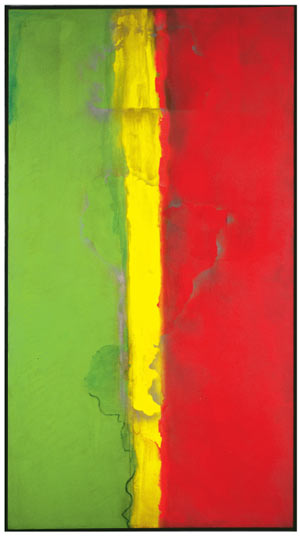WRITTEN BY JULIETTE GODDARD
Tate Britain presents an Exhibition exploring British Art shaped by its Migration. Featuring in the Exhibition are included the works of Anthony van Dyke sixteenth and seventh century artists, John Singer Sargent and many of the artists who moved between Europe and the United States.
David Bromberg, Frank Bowling, Steve McQueen, Donald Rodney and Sonia Boyce, some of the most outstanding artists are represented in these exhibitions as the show illustrates artists in Pursuit of an International Language, and New Diasporic Voices with the Black Audio Film Collective.
The real zest behind Migrations focuses on the 50’s and 60’s artists who came to Britain from the Commonwealth, artists being Black British – those artists who settled as Migrants considering themselves stateless global citizens.
Steve McQueen’s extremely powerful 35mm film transferred to HD with colour and sound called “Static 2009” really demonstrates the power of vision photography including sounds of the United States; also illustrating a powerful pursuit of the Statue of Liberty with the helicopter circling around the statue in a seven minute loop; for migrants entering the united states by boat, the statue of liberty depicts a woman escaping the chains of tyranny that lie at her feet, she is referred to as the mother of exiles.
British Art has long been informed by the country’s long and intricate history of its peoples’ movements to and from different countries. One great example of the power of this is painter Frank Bowling, the very first British Guyana (and Caribbean) born artist to become a Royal Academician (RA) at the Royal Academy of Arts, one of the most powerful establishments in the United Kingdom.
The very first Black RA in the establishment’s history, at his home and studio, Mr Bowling expressed the difficulties of inclusion in the establishment. He recalls on May 26th 2005 a phone call from London that informed him of his election to the Royal Academy…. alleviating his continuing anxieties about the failure of the British Art establishment to recognize his contributions as a British artist, despite being singled out and recognized some forty years ago as talent to watch. The historical nature of this is best described on his Wikipedia profile: On May 26, 2005 Bowling was elected a member of England’s Royal Academy of Arts. Bowling was among about a dozen artists proposed to fill one of two vacancies in the eighty-member academy, and is the first Black Artist to be elected a Royal Academician in the history of the institution.”
The most interesting facts behind Frank Bowling RA’s entry was that he had always been an award winner, notably during graduation at the Royal College of Art where David Hockney (considered one of the most influential British artists of the twentieth century) took the Gold and he was awarded the Silver medal … they were both students of this institution from 1959 to 1966. His early commissioned works included Shakespeare Quarto-Centenary canvases; “What’s in a name? That which we call a rose by another name would smell sweet”, a quote from Shakespeare and the inspiration behind the works.
After leaving for the United States, and being exposed to the notion of Black Art from an American perspective, one of his first major exhibitions in the USA was in 1971 when he had a one person exhibition at the “Whitney Museum” in New York … it was an opportunity to do some large scale paintings. Broad divisions of colour suggested flagships of African Carribean countries, stenciled and stained maps on canvas. From the windows of the East River the dreams lived on.
His connections in the US were strong. Residing at the Hotel Chelsea he had an opportunity to work on larger paintings – he experimented on works referencing to his childhood in British Guyana. His mother’s Varity store, the dress maker and seamstress skills she had been gifted with commemorated in drawings of her and color stained canvas made paintings. His childhood at Bartica, with mud flats, swamp cypresses and mango groves, the landscapes and crossings of the Atlantic with sounds of birdsong, jazz and ambiguous luminosity of the English Landscape he painted. The abstract expressionist artwork he is well known for were extremely influential, especially “Who’s Afraid of Barney Newman” a 1968 acrylic paint on canvas represented in Migrations, of green, yellow and red colours using his concepts of maps and South American contaminants.
Who inspires him? Frank Bowling’s true heroes at the Royal College were Francis Bacon, he was in awe of how he painted – great brush work, very exciting; Mary Feddon one of Bowling’s tutors alongside Sandra Blow, Carol Weight coached his early figurative painting “An Example of Abortion” included in the RCA Black exhibition, which demonstrates the strong ability Frank had to paint in the figurative tradition angst or munch.
Life drawing, a critical aspect of Mr Bowling’s professional journey was very much included as an activity at the Royal College of Art. Frank believes once you graduate from the Royal College you are an artist.


